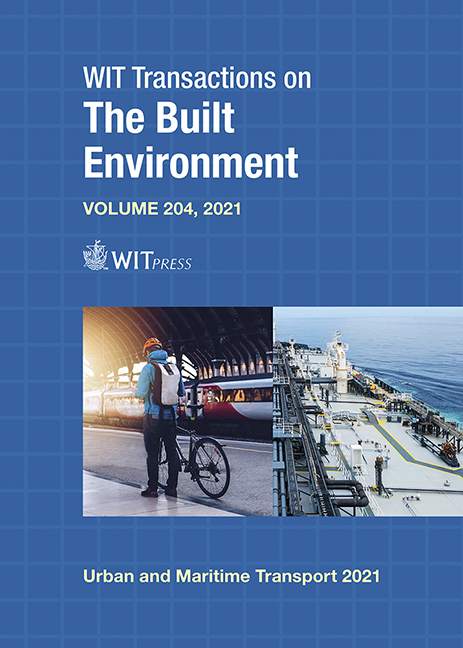ANALYSIS OF METHODS OF PROVIDING PUBLIC TRANSPORT PRIORITY IN CITIES
Price
Free (open access)
Transaction
Volume
204
Pages
8
Page Range
291 - 298
Published
2021
Paper DOI
10.2495/UT210241
Copyright
Author(s)
ANATOLY PISTSOV, DMITRII ZAKHAROV
Abstract
In recent years, the Russian Federation cities have been actively implementing the concept of “priority for the development of public transport”. The most common measure for the implementation public transport priority in Russian Federation is the organization of dedicated lanes. Most often, lanes for public transport are created by reducing the number of lanes for cars and trucks. This method effectiveness is well studied, and it is also known that this measure leads to deterioration in traffic parameters for private vehicles. The article discusses an alternative variant of the public transport priority on intersections with the use of traffic light adaptive control. The analysis of the advantages and disadvantages of two algorithms for adaptive control of traffic light objects is carried out according to the criterion of reducing the delay time of public transport when driving through intersections. With the help of imitation micromodeling, the dependence the delay time on the traffic intensity at a separate intersection was established for the basic variant, the variant with a lane for public transport, two variants of the active priority and the combined variant “active + passive” priority. For all variants, a comparative assessment was made of the deterioration of the driving parameters for personal cars and the improvement for public transport. The methods of granting the public transport priority were ranked according to the criterion of efficiency (travel time delay) for vehicles and all transport system users (drivers and passengers). It was found that in terms of average user travel time delay, passive priority reduces delay by 11.2% on average across the board. Using the combined method (active + passive) reduces user travel time delay by 17.1%. Also, using the combined method reduces the negative effect on personal vehicles compared to passive ones.
Keywords
public transport, public transport priority, active priority, intelligent transport systems, transport modelling





